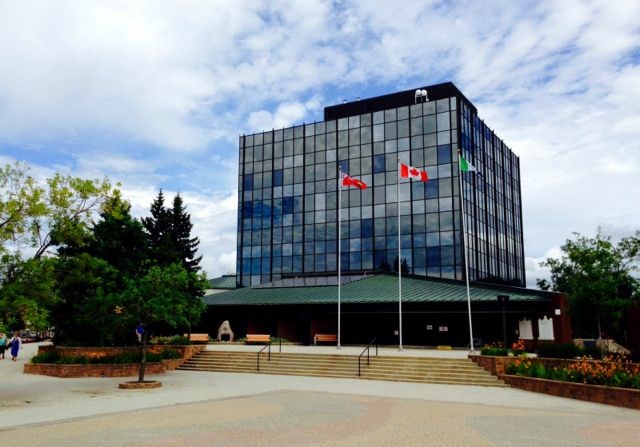The city’s latest year-end financial projections are in and they paint a much rosier picture than just a few months ago.
Using year-to-date numbers from the end of September, city staff are projecting to end the year with a $175,626 operating surplus, or 0.15 per cent of the gross budget. Despite the leftover funds though, the report to City Council on Monday says the amount is nominal enough to consider themselves right on track with the 2015 budget.
The water and sanitary sewer departments, on the other hand, are anticipated to end the year with a $38,816 surplus despite the drastically more dim forecasts from city staff just two months ago.
The most notable savings from the general budget come from the engineering, environmental services and works department, who are projecting a $379,755 surplus, and the fire department’s forecasted $226,853 surplus, due to position gapping, reduced materials and rentals and decreased overtime.
The winter control budget is anticipated to be under budget by roughly $200,000 after being drawn down significantly last year to offset the deficit, leaving only $2,015 in that reserve fund.
Elsewhere, the city’s chief administrative officer, Jerry Knox, was able to accomplish his targeted $200,000 in corporate-wide savings as well.
The biggest deficits, though, are anticipated to come from general government activities (-$448,993) and community services (-$57,045), due to higher utilities, employee accommodations and lower transit revenues.
“Sometimes when numbers come out, specifically in municipal politics, and you have a surplus, people say ‘they must have padded the budget and done the numbers,’” said Coun. Derek Shogren. “But I mean it when I say the expectation of a council should be, just like in business, you’re expected to deliver numbers when we agree what we’re going to do moving forward.
“I think we need to have some wins where the CAO and CFO can start saying ‘we’ve hit numbers that council has directed us to hit and these things are coming in on time and on budget,” Shogren added. “We need the public to know that when we say things we’re going to deliver results.”
The report received by council on Monday cites 93 per cent of the water and sanitary savings as coming from slightly lower personnel costs.
As of mid-August, city staff were telling the tale of a projected $500,000 deficit in the water and sanitary sewer budget so that council could “ready themselves” for the impact of switching to the water meter billing cost recovery model. At the time, they said that forecast was due to the downward trend in consumption patterns in the ICI sector.
Granted that was before the new system was put into action and the unknown variable of residents’ reaction to conservation efforts took place.
But as of the end of September, with one month of the innovative revenue recovery system under their belt, their initial projections look to be off because, as the report reads, the ICI/multi-residential sectors “rebounded.”
“The good news in that report is that the $500,000 deficit projection has disappeared and has become a small surplus and I’m looking forward to council getting some further information as we go along and get some experience with the water meters,” Coun. George Maroosis said on Monday, who was in charge of the special water rates review committee.
Because of the delayed adoption of the water meter billing, the city and its residents have been playing catch up in trying to accomplish the water and sanitary sewer cost recovery, which was pegged at $21,858,797, a 3.68 per cent ($721,129) increase over 2014.
City staff still identify the potentially volatile revenue fluctuations and unpredictable consumption patterns as a primary risk moving forward, as well as increased utility costs and unforeseen emergencies.
The year-end projections presented Monday assume that consumption patterns from September remain consistent for the rest of the year.
If the city trends back into their June financial projections and end the year with a deficit, they have approximately $3.5 million in operating reserve funds and an additional $1.8 million between the water and sanitary sewer reserve funds, all of which are below target levels.
“We can use those surplus dollars to build up reserves, which are not huge, or use that to do other projects that we didn’t have the money for originally,” Shogren said of the most recent forecasts. “I think it’s a good goal when senior management deliver below those numbers either by increasing revenues of cutting back on expenses.
“I think some people in the community lost trust in the last couple of years in staff and council to deliver the numbers that they said,” he concluded.



